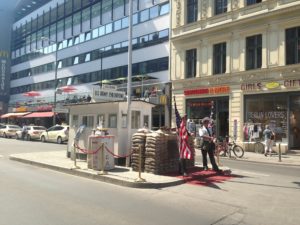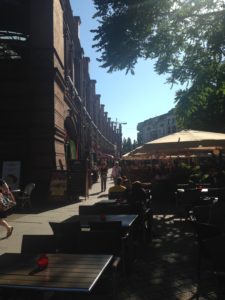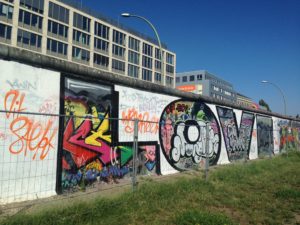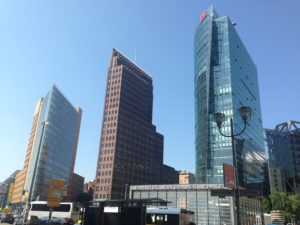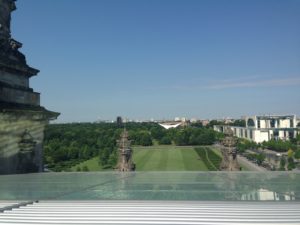Juxtaposing Past, Present, and Beer in Berlin
Berlin drifts by as you journey within the city on the S-Bahn, one of its public train systems. Unlike many other European destinations, no single motif dominates its appearance – it does have an equivalent of Paris’ batiments historiques or Venice’s palazzos everywhere in sight. Rather, in Berlin artifacts from the German Empire, Soviet occupation, and modern day buildings exist side by side, giving the city a mosaic of different neighborhoods, each with their own identity. My hostel in Berlin hid just around the corner from Oranienberger Strasse, on the edge of the Mitte district. Mitte offers a glimpse in miniature of Berlin’s jumbled up history, with Imperial monuments like the Brandenburg Gate just minutes from the Cold War-era Checkpoint Charlie, sprinkled in with modern eateries and museums. Because of the highly convenient proximity of museums, I hopped from landmarks to three different museums all in day and had a short walk back to my hostel. The Topography of Terror and the Jewish Museum of Berlin are truly fascinating and sobering reminders of this city’s dark and complex past.
Itself a product of Eastern bloc economic stagnation, the Prenzlauer Berg neighborhood has been infused with restaurants, trendy bars, and life since the fall of the Wall in 1990. Here, history has given way to bourgeois paradise, as young Berliners gentrify the area with art galleries, cafes, open air markets, and of course, biergartens. The city has turned a former part of the Wall’s ‘death strip’ into Mauerpark, a green space that has outdoor karaoke on Sundays. As I walked through Prenzl’berg, I marveled at how Berliners brought so much life and flourishing to such a depressed area only a couple of decades ago.
However, those looking for the wilder, Bohemian side of Berlin only have to ride the S-Bahn a couple stops down the edges of the Spree to get to Friedrichshain, Prenzlauer Berg’s grungier, cooler cousin. Here, in the abandoned and completely graffiti-covered warehouses of former East Berlin, is a vibrant club culture. Along the banks of the river Spree, a stretch spanning more than one kilometer has also been preserved as an outdoor art gallery. On a sunny day, the powerful and even whimsical art celebrating unity and peace makes even the Wall look good. And for those looking to stay later in the evening; the district takes on a whole new energy at night. Some of the world’s most famous clubs are here, including the famously exclusive Berghain. Personally, I wasn’t that interested in being rejected by an internationally reputed bouncer, but I still ended up departing the district at 4am on a Thursday.
Finally, on the other side of Unter den Linden, the central tree-lined avenue, the Tiergarten and Potsdamer Platz neighborhood showcases Berlin’s responsible, monumental side. The Tiergarten provides an urban natural environment for Berliners to ride their bikes under sun-dappled paths and monuments to Germany’s triumphs under the Kaisers. I took a moment to rest by an equestrian statue during a very pleasant walk crossing Tiergarten to Mitte, past the Reichstag and its modern offices. In Potsdamer Platz, glass skyscrapers exhibit Berlin’s modernity right next to the outline of the Wall, showing the vitality of the reunited city.
Even as all of these neighborhoods seemed so different and diverse, they all formed part of a whole, juxtaposing past glory and tragedy, modern renewal, and timeless joie de vivre. I found it so interesting to see how, like the roots of plants growing among cracks in concrete, life in Berlin has sprung up around the sites desolated by war and oppression. The outline of the wall in a sense now unites Berlin as thousands, uninhibited, cross its zones that formerly represented death and separation. I loved discovering Berlin’s different faces, and I can’t wait to return again.

